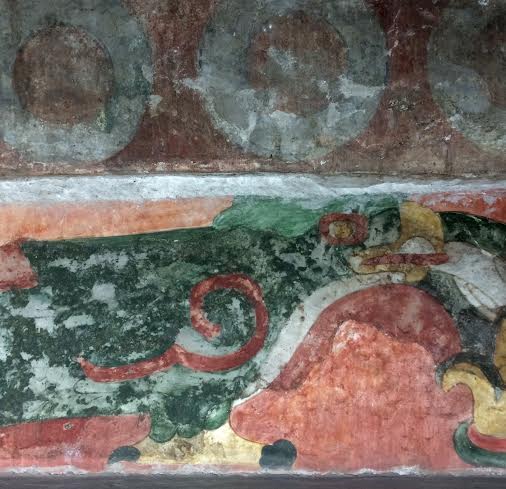
Pyramid of the Moon.
Archaeologists and other lovers of ancient civilisations can count their blessings that the zealous Spanish Conquistadors did not turn their eyes northeast from Tenochtitlan when they were busily building over the Aztec capital. Located about 50kms in that direction are the impressive remains of Teotihuacan, a vast site dating back to almost 200 BC, an inspiration to the Aztecs but the work of a different Mesoamerican culture. According to UNESCO it was the culturally dominant Mesoamerican city during that era’s classical period and influenced the culture of city-states from central Mexico to the east, west and south all the way to Honduras, and to the north as far as present-day Texas. But who the Teotihuacans were, what they called themselves or what language they spoke remains a mystery.

Avenue of the Dead and Pyramid of the Sun.
The name of Teotihuacan, which means place of the Gods, was actually bestowed by the later arrivals who believed that only gods could have created such a city. And it is certainly impressive. From the upper levels of the Pyramid of the Moon – those early morning sessions at the gym paying off to master the seriously steep steps – the grand scale of this ceremonial city-state can be appreciated. Straight ahead the imposing north-south, 40m-wide, 5km-long Avenue of the Dead, thought to have been so named because of the tomb-like structure lining the sides. About halfway down the avenue on the left the dominant Pyramid of the Sun stands framed by the background mountains.

Sophisticated wall artwork and friezes.
At its peak Teotihuacan spread over an area of around 35sq-kms with a population of over 25,000, although some estimates put the population at 100,000 or more. Its success was said to result from its organisational structure and rich resources: plentiful water from rivers and lakes; food sources of maize, cactus, fish, game animals like deer and rabbits, and turkeys; pine and oak forests in the nearby mountains; obsidian from the volcanos, prized for weapon making and a valuable trading item; other volcanic rocks; and ample deposits of clay for ceramics. Mysteriously Teotihuacan declined around 700AD after being razed by fire and abandoned, possibly as a result of a revolt against an increasingly tyrannical government, or after attack from a rival city state. Much remains to be unearthed about this rich and sophisticated culture including deciphering the site’s original name, all guaranteed to keep those archaeologists happy for some time to come.


Treasures from Teotihuacan museum including a stone “ball” from a popular game.





April 27, 2016 at 3:51 am
Its a very interesting civilisation and history.